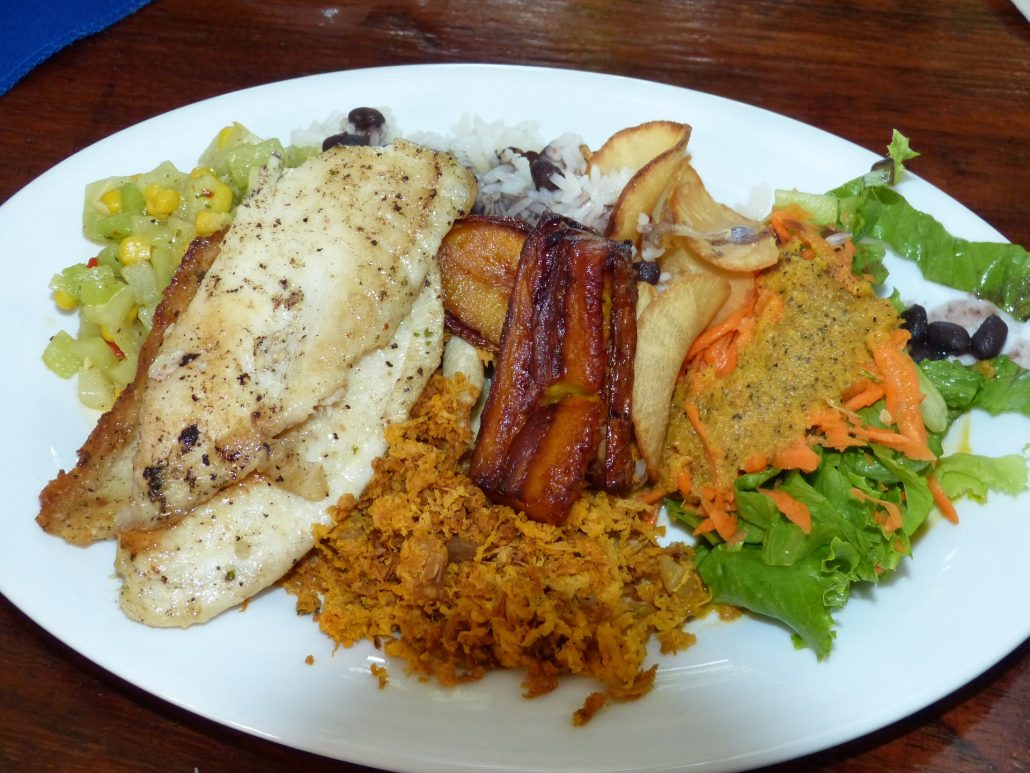Open up a menu in almost any Costa Rican restaurant, and you'll be greeted with the casado.
Casado? Your Spanish-to-English dictionary says that means "married." Who says what now?
Welcome to Costa Rica's national dish and most popular lunchtime special, the famed casado: white rice, black or red beans, cooked veggies (aka picadillo), and/or salad, plus your choice of protein (chicken, beef, fish, or eggs), usually with a side of cooked plantains.
What's in a Name? The Costa Rican Casado
So, what does marriage have to do with Costa Rica's beloved meal? Simply put, a Costa Rican casado "marries" all the country's favorite foods: rice and beans, our staple for energy and sustenance; a bit of mildly flavored protein, for fueling muscle; preparations of local veggies, fresh from the earth; and sweet plantains, Costa Rica's favorite healthy-ish dessert.
Notably, casados are very flexible, so depending on the restaurant you may also encounter pasta salad, potato salad, squeaky farmer's cheese, ensalada rusa (Russian salad, a beet-infused potato salad), potato chips, fruit salad, and other basics common on the Costa Rican plate.
It's a celebration of Costa Rican color, flavor, and texture – and of tradition. And of deliciousness. Trust us.
Where to Lunch on a Casado ?
To be honest, a better question might be – where not? Most restaurants offer some version of a casado – yes, it's that popular! – although its various iterations can be quite different.
If you frequent a small soda, a family-owned restaurant (and the Costa Rican version of a diner), you're likely to come across the most common version of the meal: Down-home, honest food designed to fill stomachs and delight the palate. These versions are typically $4-$5 a plate and have more than enough – often, much, much more than enough – food to fuel you through to dinner.
At many of Tamarindo's restaurants, you'll find an upscale version of the casado : Finer versions of the basic ingredients, to include ultra-fresh fruit and salads, fine dining sides, and fresh-caught fish, slow-roasted chicken, or herb-crusted beef. The basics are the same, but their preparations are not. Expect to pay upwards of $10 for an upscale Costa Rican casado.
No matter what, you can count on one thing: These are hyper-local ingredients and these preparations are rooted in Costa Rican tradition.
A Side Dish of History
Once upon a time, the majority of Costa Rican workers labored in physical jobs. The exact origin of the casado is debatable, even among academics, but one thing is sure: casados evolved out of a need for an extremely filling meal to fuel their hard labor. And thus, the casado was born.
Originally wrapped in a banana leaf, much like Christmas tamales, the casado married carbs, protein, and fat to create a complete and filling meal – a complete, filling and portable meal, to be precise. Set the banana leaves out in the sun, and hard-working men would have a hot meal to eat at lunch time.
So, now you know! The next time you're in town, be sure to order a casado for your lunch. Preferably, early in your trip. Because you'll probably want a repeat. ¡Provecho!

